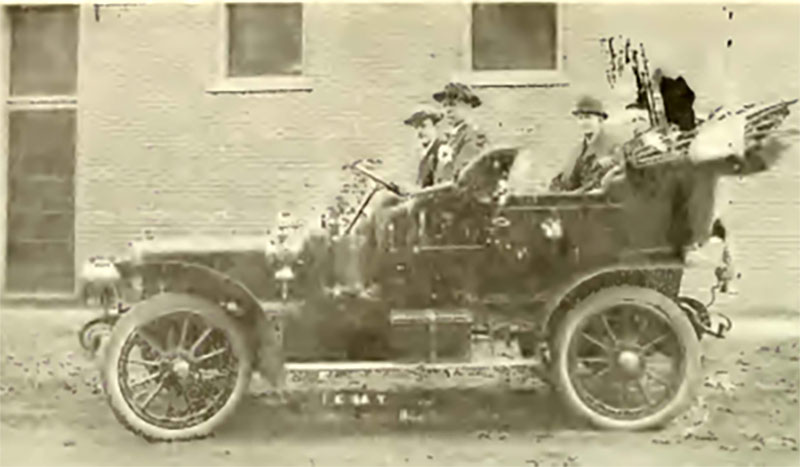A better market was available when the railroads were built in 1872-74.
Much of the wool was used, also. Any extra was shipped to Philadelphia; 500 sheep would break the market in Chicago. John Cole had a flock of 2,000 during the Civil War.
George W. Smith sold a cow to George Gephart for $9. Pork brought $ 1.50 per I 00 lbs. in Chicago. Henry Mills bought a horse in exchange for 110 days' work.
William H. Brown and John H. Brown fanned near Pilot Grove; George W. Smith at Olivet. William M. Bines, with his Uncle John Bines, settled west of Ridge Fann. All of them settled before the Civil War.
Beckwith's 1897 History explains "Elwood
land drains into Little Vermilion River, being
 685 feet above sea level. Indeed, the farmers here are very fortunate in the general quality of their land, deep and rich, and few are found who can reasonably complain."
685 feet above sea level. Indeed, the farmers here are very fortunate in the general quality of their land, deep and rich, and few are found who can reasonably complain."
Soon some farmers built houses in Ridge Farm and drove out to oversee their help. John Brown left orders for the day on a shingle in his barn.
By 1893, threshing rigs went from farm to farm. Porter Binkley threshed right in the village. His son, Dane, remembers that as a child he tried to keep pace working with his father and Sam Fulton. Ira Jones, W. N. Bines, Nathan Hale, Orville Cox, Til York, and C. W. Busby's did custom work. Ted Henderson remembers being water boy and the excitement of being part of the crew. Three elevators at Ridge Farm and one at Vermilion Grove operated by Everett Smith are now diminished to one. That is the B. C. Christopher Grain Co. in Ridge Farm.
Curt Jones purchased from Frank Jones an elevator that stood on the south side of the Ridge Farm-Indianola road and immediately west of the Big Four tracks. Harry Brock-Jones operated an elevator at the site of the Cone & Cup Drive-in W. F. Banta built a large feed and grain business at the present elevator site. It was handy for tht: teams of horses to drink at the trough by the town pump. Sam Fulton, Tom Fulton and Minor Sisson helped at the elevator, each for more than 20 years.

